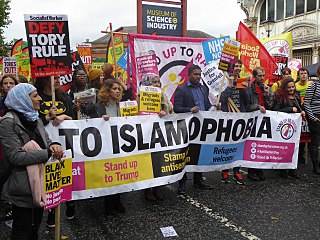Saeed Naqvi
Pictures of unrelieved despair everywhere on TV and, that too, in the course of an extended house arrest (lockdown), does leave one, to use Faiz’s words, with “pain where the heart once was”. Heaven knows there were problems then too; but in these days of stress, I reflect on the period of the Cold War with an almost irreparable sense of loss.
The period spanned my childhood, between my village and Lucknow, school, college, employment at The Statesman, The Indian Express, with papers in London, Boston and Salem, Massachusetts. All of this experience was without religion ever being an obstacle in the three continents where I worked. During my spell at Salem, my wife and I lived in nearby Marblehead where we were much pampered members of the prestigious North Shore Jewish Community Centre. This is something unthinkable in the post 9/11 Islamophobia.
I find it difficult to believe at this distance in time, the warmth with which the gorgeous Bathsheba Hermon, donning a large straw hat, Public Relations officer for the Jerusalem municipality, received me at Ben Gurion airport. The year was 1969: an Australian lunatic had set fire to the Al Aqsa mosque. Israel in those days was a series of cooperatives called Kibbutz, collectively owned by the inhabitants, an almost dreamy kind of socialism. Total partiality to the Palestinian issue on my part did not obstruct a benign contemplation of the Kibbutz system. This response must be attributed to two factors – attractions of soft socialism and Bathsheba Hermon as the tour guide.
Hard to believe in the days of the Ayatollahs that one route from Ben Gurion to New Delhi was via Teheran. North Teheran those days was Paris to the power of infinity. The elite were totally unaware of the diligence of the clergy in the mosques and the Tudeh (Communists) who had latched assiduously onto the national mood after Socialist Prime Minister Mohammad Mosaddeq’s ouster by the Anglo-American combine in 1953.
Compared to Beirut, Teheran was, well, tinsel. European cosmopolitanism with an Arab soul best defined Beirut. Casino du Liban and the Crazy Horse Casino (which came from Paris for seasonal spells) and pubs, restaurants, cafés sparkled with conversations. I was a junior journalist, insistent on ambitious itineraries, my ears always cocked for scraps of conversation to be picked up, say, where Edward Said, Faiz Ahmad Faiz and Eqbal Ahmad were in attendance.
Beirut was the world’s most charming city, the only one where sport enthusiasts could, within the space of two hours, ski and swim in sea.The metropolis never could rediscover its élan after Israeli defenceminister Ariel Sharon’s brutal invasion of Lebanon in 1982. Cairo’s early Arab socialism had its attractions but intellectual life centered largely around Nasser’s moves, revealed in HassaneinHeikal’s columns in the Al Ahram which were debated and scrutinized for the entire week.
Whatever the limitations of the system, editorials did matter because they were the bridge between public opinion and the state. They provided insights into what policy makers were thinking. Post-Cold War Murdochization of the media afflicted all continents; it proceeded hand in hand with globalization whose central grid was to be in Washington. The collapse of that project and global establishments obstinately stonewalling any change in direction is at the heart of our current misery.
Even though Australian multicultural experience could never measure upto Canada’s, the period between the Cold War and its end was exactly when Australia was at its most relaxed, particularly after Prime Minister Malcolm Frazer (1975-83) buried for good Australia’s “White only” policy. Slowly, multiculturalism picked up, the odd Pauline Hanson, Australia’s Marine Le Pen, notwithstanding. I interviewed a Chinese Mayor of Sydney in the late 80s, early 90s.
The project was hit for a six when Australian prime minister John Howard and Britain’s Tony Blair hitched their wagons to President George W Bush’s Islamophobia; all post Cold-War, remember. For peace on earth, it was a terrible trio.
Indian multiculturalism was weak in its foundation from the very beginning in 1947. How could there not have been incipient communalism when a Muslim state is created next door but the larger part which falls to the Hindu’s lot, must, per force, be called a secular state? Initially communalism’s other side was the “Hindu rate of growth”, an expression made famous by economist KNRaj for describing the crawl of the Indian economy. Even so it did impact lives. In the golden period I have described at the outset, the prejudice I faced was in finding a house until KuldipNayar and Bikram Singh intervened. That intervention is totally missing today.
In India, identity politics translates quite simply into communalism which already had lethal inputs from “1,200 years of foreign subjugation” (Modi’s phrase) and caste. And yet we have the same, tired list of economists paraded on our TV screens, sunk in the deepest layers of thought, proposing ways to “place the economy on track” the unmistakable assumption being that the “tracks” have been laid to perfection. With coronavirus on a gallop, the economy in free fall, I wonder if millions who have walked will be satisfied with dollops of identity politics alone. Some bread may be required.
Meanwhile, all the cheerful places mentioned in the snippets from my diary from the 60s to the 90s have today been transformed into desolations by the authors of the post Cold-War world. And, for want of space, I have not even mentioned the willful destruction of Tripoli, Damascus and Baghdad.
The writer is a veteran journalist and seasoned columnist.






































